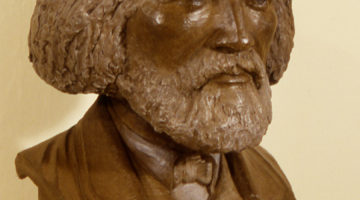A centuries-old Latin saying goes like this: “Male ulciscitur dedecus sibi illatum, qui amputat nasum suum.” Loose translation: Be careful when you do something out of spite or revenge because it may come back to hurt you. If that is so, there should be a lot of hurting among those Arab and Muslim Americans who, outraged by then President Joe Biden and Vice President Kamala Harris’ policy toward the Israel-Gaza war, voted for Donald Trump, who had promised to broker peace. But, within days of his re-election, he unveiled a startlingly different plan.
At a joint press conference with visiting Israeli Prime Minister Benjamin Netanyahu, the president told reporters, “The U.S. will take over the Gaza Strip and … we’re going to develop it, create thousands and thousands of jobs, and it’ll be something that the entire Middle East can be proud of.” He said that he will support resettling the Palestinians “permanently” elsewhere. The proposed reconstructed Gaza, could become a home to “the world’s people” and “the Riviera of the Middle East … ” Amir Ghalib, mayor of Hamtramck, a Michigan city which was the first in the nation to elect an all-Muslim council, said he does not believe the U.S will expel the Palestinians from Gaza. He had endorsed Trump as a “man of principles” and “the right choice for this critical time” and campaigned with him.
Some leaders, instead of denouncing the Trump plan, have turned to scapegoating. Rabiul Chowdhury, a Muslims for Trump founder, told The New York Times, “Democrats and [the] extreme left are trying to kind of use this to ignite our community but we’re not falling for that trap; they’re still worst in our eyes. We are finding our alliances through MAGA folks” and there are many areas “where MAGAs and Muslims align.”
He could be right. The president rewarded Lebanese American businessman Massad Boulos, who actively campaigned for him, with an appointment as a senior adviser on Arab and Middle Eastern affairs. His son Michael Boulos is married to the president’s daughter Tiffany.
Waleed Shahid, a Democratic strategist who promoted Trump, also criticized “the number of Democratic pundits who are going around with an ‘I told you so’ approach to voters and communities who have voted for Democrats for 40 years. I don’t think condescension and sneering is going to be helpful.”
But James Zogby, a founder of the Arab American Institute and a Democratic National Committee member, was uncompromising in his criticism of those who endorsed the president. “There was a need to recognize the danger of Trump and some folks in my community, some hustlers, were deliberately deluding themselves and others into thinking this was actually going to be a protest vote,” Zogby told The Times.
The Trump plan for Gaza involves taking foreign territory devastated by a lopsided war which has killed more than 45,000 people, most of them civilians, including women and children, expel the survivors and transform it into a playground for the rich. And he is not backing down, even as domestic and international criticism mounts against what experts say will be ethnic cleansing tantamount to a war crime and a crime against humanity.
The president wrote on his social media platform that he envisages his plan will be implemented “at the conclusion of fighting” between Israel and Hamas, with Israel handing control of Gaza to the U.S. By then, Palestinians “would have already been settled in far safer and more beautiful communities, with new and modern homes, in the region.” He initially said U.S. troops could be involved but later backtracked on that point.
Proposing such a plan fits into the president’s well-known tactic of distracting attention from more important domestic concerns. But, according to Jewish Insider, citing a Wall Street Journal report, it was not an impromptu proposal. He floated the idea at a meeting with Netanyahu at Mar-aLago in July and on several other occasions.
Netanyahu has described it as “worth paying attention to” and “something that could change history.” Trump, he said, was “thinking outside the box with fresh ideas” and was “showing willingness to puncture conventional thinking.” Israel’s defense minister Israel Katz said the plan can “allow a large population in Gaza to leave for various parts in the world.” He announced that he is, according to The Times, ordering the military to draw up concrete plans for Gazans who wished to do so to leave.” It will include “exit options via land crossings, as well as special arrangements for departures by sea and air.”
Katz did not indicate whether those who leave can return. Netanyahu told Fox News that they can “come back.” But Trump told Fox News they will not be allowed to do so, saying, “No, they wouldn’t because they’re going to have much better housing. In other words, I’m talking about building a permanent place for them.”
That will not be a first. For more than 75 years, Israel has refused to accept the 750,000 – 80 percent of the population then – who were forced to flee abroad in what Palestinians call the Nakba (Catastrophe) – or their descendants.
It is not surprising that Netanyahu sounded lukewarm to the Trump plan. Eight months ago, the prime minister’s office unveiled his own proposal, which includes turning Gaza into “a significant industrial port on the Mediterranean, which would be the main entrepot for the export of Gazan goods, but also Saudi oil and other raw materials from the Gulf,” according to The Jerusalem Post.
Netanyahu’s proposed “Marshall Plan” envisages a rebuilt Gaza as “a massive free trade zone … which would allow Israel, Gaza, and Egypt to take advantage of the location, co-operatively,” The Post reported. The plan will include the exploitation of the 1.7 billion barrels of oil and 122 trillion cubic feet of natural gas, together worth about $524 billion, discovered in the Levant Basin off Gaza.
But any such plan will depend on support from neighboring states and Trump’s Palestinian expulsion and Riviera proposal make that impossible. Those states, including Saudia Arabia, have rejected it. Still, the complicity of some Arab and Muslim American leaders in Trump’s election no doubt helped pave the way for such a proposal, rather than ending the war and advancing Palestinians’ decades-long demand for an independent state for which there is worldwide support.
Kenyan journalist Patrick Gathara, who cited the Netanyahu plan in an Al Jazeera commentary, offers another perspective on Trump’s designs on Gaza — as well as Greenland and Panama — writing that they “spring from the same root, one that has been nurtured by half a millennium of European colonial aggrandizement.” He cites the 1479 Treaty of Alcacovas which, he notes, “established the principle that an area outside of Europe could be claimed by a European country.” Also, he cites, the Treaty of Tordesillas and the Treaty of Saragossa “with which the Portuguese and the Spanish purported to divide the globe between themselves.”
According to Gathara, “There is a clear line from that to the infamous Berlin West Africa Conference 400 years later, attended by the U.S. and all major European powers which established the legal claim by Europeans that all of Africa could be occupied by whoever could take it.” Trump, he writes, “is unwittingly attempting to base his colonial claim to Gaza on the doctrine that he can impose American rule, in this case through expulsion of the natives, and that he will enable trade to flourish.”
A variation of that theme took place some 60 years ago when Britain and the United States colluded to forcibly remove the entire 2,000-strong population of the Chagos Archipelago in the Indian Ocean to make way for a joint British-U.S. military base. Britain eventually acknowledged that its treatment of the Afro-Asian Chagossians was “shameful and wrong” and agreed last October to hand the archipelago back to its original owner, Mauritius, so they could return to their homeland – except for Diego Garcia, where the base is located; that will remain under British control.













No Comment